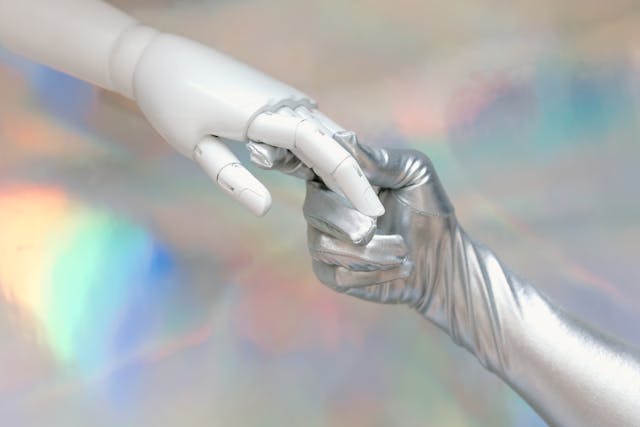
The landscape of industrial automation is undergoing a radical transformation, fueled by the advent of innovative robotic model designs. These cutting-edge designs push the boundaries of what is possible in manufacturing, logistics, and other industrial sectors. Check out our article on robotic model designs and their potential to shape the future of industrial automation.
Modular Robots
Modular robots represent a significant leap forward in flexibility and adaptability. These robots consist of multiple interchangeable modules that can be reconfigured to perform different tasks or adjust to specific applications.
Advantages of Modular Robots
- Flexibility: Modular robots can be easily adapted to changing tasks and environments, making them highly versatile.
- Scalability: Companies can add or remove modules to scale the robotic system according to their needs.
- Reduced Downtime: In the event of a malfunction, only the affected module needs to be replaced or repaired, minimizing downtime.
Applications
- Manufacturing: Modular robots can be reconfigured for different production lines, improving efficiency.
- Warehousing: They can be adjusted to handle various types of inventory, from small items to large pallets.
- Inspection: Modules equipped with sensors can be used for detailed inspection of products or infrastructure.
Mobile Robots
Mobile robots, including autonomous mobile robots (AMRs) and automated guided vehicles (AGVs), are transforming the logistics and supply chain sectors. These robots navigate through environments using sensors, cameras, and advanced software algorithms, enabling them to move materials autonomously.
Benefits of Mobile Robots
- Autonomous Navigation: Mobile robots can navigate complex environments without human intervention, improving efficiency.
- Real-Time Adaptability: They can adjust their paths in real-time to avoid obstacles and optimize routes.
- Cost Savings: By automating material handling, companies can significantly reduce labor costs.
Use Cases
- Warehousing and Logistics: Mobile robots transport goods between locations, streamline inventory management, and facilitate order fulfillment.
- Manufacturing Plants: They deliver raw materials and parts to different production areas, reducing manual transportation efforts.
- Hospitals: Mobile robots assist in transporting medical supplies, reducing the workload on healthcare staff.
Advanced Grippers
The development of advanced grippers enables robots to handle a variety of objects with greater precision and delicacy. These grippers often mimic the dexterity and adaptability of the human hand.
Key Features
- Versatility: Advanced grippers can handle objects of various shapes, sizes, and weights.
- Precision: High-precision sensors allow for delicate handling of fragile items.
- Adaptive Control: Machine learning algorithms enable grippers to adjust their grip based on the object’s properties.
- Electronics Manufacturing: Grippers can delicately handle small and sensitive components during assembly.
- Food Processing: They can manage diverse food items without damaging them, allowing for greater quality.
- E-Commerce: Advanced grippers are used in picking and packaging operations, where a variety of items need to be handled swiftly.
- Improved Safety: Built-in sensors detect human presence and stop operations to prevent accidents.
- Ease of Programming: Cobots are often designed with user-friendly interfaces, making them easier to program and deploy.
- Increased Productivity: By collaborating with human workers, cobots can perform repetitive or strenuous tasks, allowing human employees to focus on more complex activities.
- Flexibility: Their soft structures allow them to squeeze into tight spaces and manipulate delicate objects.
- Safety: Soft materials reduce the risk of injury during human-robot interaction.
- Adaptability: They can conform to varying shapes and surfaces, making them highly adaptable.
- Medical Field: Soft robots can assist in minimally invasive surgeries and handle delicate tissues.
- Agriculture: They can gently harvest fruits and vegetables without damaging them.
- Logistics: Soft robots can handle irregularly shaped objects that traditional robots struggle with.
Industrial Applications
Collaborative Robots (Cobots)
Collaborative robots, or cobots, are designed to work alongside human workers. Unlike traditional robots, which often require safety cages, cobots are equipped with advanced sensors and safety features that enable them to operate safely close to humans.
Advantages of Cobots
Popular Applications
A ssembly Lines: Cobots assist human workers in assembling products, improving speed and accuracy.
Quality Control: They perform detailed inspections, identifying defects and making sure the work meets quality standards.
Packaging: Cobots handle tasks like boxing, labeling, and palletizing, reducing manual labor.
Soft Robots
Soft robots are an emerging class of robots made from highly flexible and elastic materials, enabling them to perform tasks that require a high degree of dexterity and subtlety.
Unique Attributes
Potential Uses
Conclusion
The future of industrial automation is shaped by innovative robotic model designs that improve flexibility, efficiency, and safety. As these technologies continue to evolve, they will undoubtedly unlock new possibilities and drive the industrial automation landscape towards greater heights of productivity and innovation.
